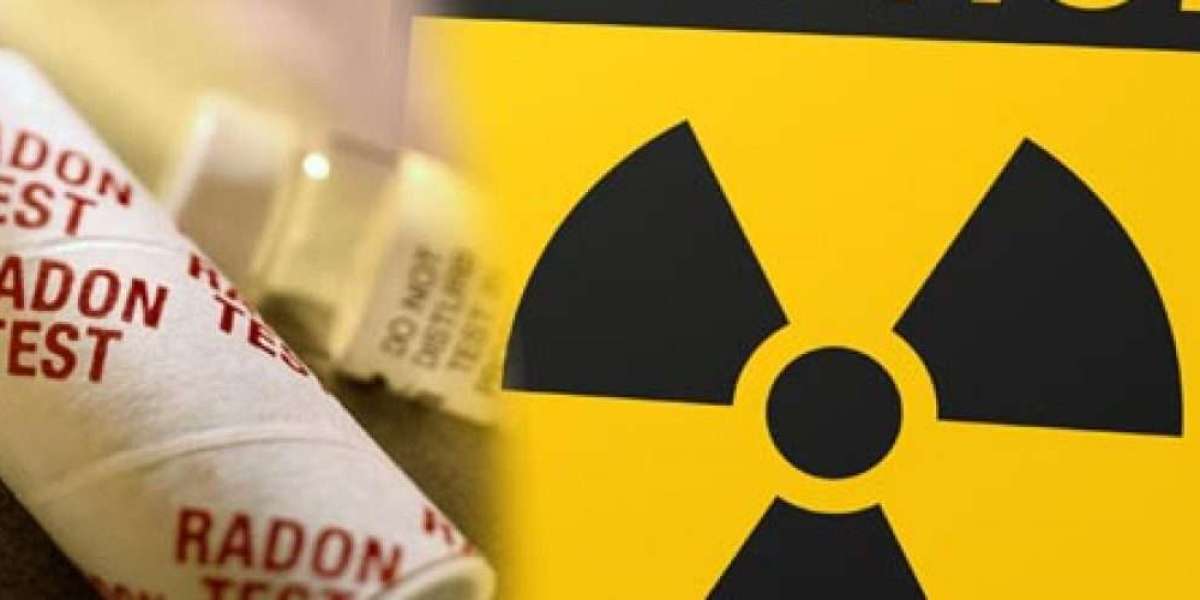Ottawa, renowned for its vibrant communities and scenic landscapes, faces a hidden but significant health risk: radon gas. This invisible, odourless, and tasteless radioactive gas can accumulate inside homes, posing a long-term threat to residents’ health. Understanding radon, its prevalence in Ottawa, and the practical steps you can take to protect your household are essential for every homeowner and tenant in the region.
What Is Radon and Why Is It Dangerous?
Radon is a naturally occurring radioactive gas formed by the decay of uranium in soil and rock. Outdoors, radon disperses harmlessly into the atmosphere. Indoors, however, it can seep through cracks and gaps in foundations, accumulating to levels that increase the risk of lung cancer over time. In fact, radon is the leading cause of lung cancer among non-smokers and the second-leading cause overall in Canada, responsible for approximately 16% of all lung cancer deaths in the country.
How Radon Enters Your Home
Radon gas moves from the ground into buildings through:
- Cracks in foundation walls and floors
- Gaps around pipes and utility lines
- Sump pits and floor drains
- Crawl spaces with exposed soil
The amount of radon that enters a home depends on the local geology, the construction of the building, and ventilation patterns.
Radon in Ottawa: The Local Picture
How Common Is Radon in Ottawa Homes?
Ottawa’s radon risk is higher than many other major Canadian cities. According to the 2024 Cross Canada Radon Report, the average residential radon level in Ottawa–Gatineau is 85.9 Bq/m³, with 1 in 6 homes exceeding the Canadian guideline of 200 Bq/m³. For comparison, Toronto’s average is 43.0 Bq/m³ (1 in 22 homes above 200 Bq/m³), while Calgary and Edmonton have similar risk levels to Ottawa.
Neighbourhood Variability
Radon levels can vary dramatically from one home to another—even on the same street. For example, residents in Kanata and Bridlewood have reported levels ranging from below 50 Bq/m³ to over 400 Bq/m³, with mitigation measures such as air exchangers reducing levels significantly. This variability underscores the importance of individual testing.
Health Risks: Why You Should Care
Radon exposure is a long-term health risk. When inhaled, radon’s radioactive particles become trapped in the lungs, damaging tissue and increasing the risk of lung cancer. The risk is compounded for smokers, but non-smokers are also at significant risk. Children, due to higher breathing rates and more time spent indoors, are particularly vulnerable.
There is no safe threshold for radon exposure—any amount carries some risk, but the danger increases with higher concentrations and longer exposure times.
Testing for Radon: The Essential First Step
Why Test?
Since radon is undetectable by human senses, the only way to know your home’s radon level is to test for it. Health Canada recommends that all homes be tested, regardless of age, type, or location.
How to Test
- Long-term test (3 months or more): Provides the most accurate assessment, especially when conducted during the heating season (fall/winter) when homes are closed up.
- Short-term test (1 week to 1 month): Useful for quick checks, but less reliable for making mitigation decisions.
Test kits are widely available at hardware stores, online, or through certified radon professionals. Placement is crucial: the device should be located in the lowest lived-in level of the home, away from drafts, direct sunlight, and high humidity.
Professional Testing
Certified radon measurement professionals can conduct tests and interpret results, which is especially useful if you are buying or selling a home, or if you want expert guidance from the outset.
Understanding Your Results
Radon levels are measured in becquerels per cubic metre (Bq/m³):
- Below 200 Bq/m³: No action required, but retest every few years or after major renovations.
- 200–600 Bq/m³: Moderately dangerous. Take action within 1–2 years.
- Above 600 Bq/m³: Highly dangerous. Take action within 1 year.
Even levels below 200 Bq/m³ carry some risk, but the urgency of mitigation increases with higher concentrations.
What If Your Home Has High Radon?
Don’t Panic—Mitigation Works
If your test shows elevated radon, effective solutions are available. Health Canada and Ottawa Public Health recommend consulting a certified radon mitigation professional to design and install a system tailored to your home.
Mitigation Methods
1. Active Soil Depressurization (ASD) / Sub-Slab Depressurization
- How it works: A pipe is inserted through the foundation slab into the soil below, connected to a continuously running fan that draws radon from beneath the home and vents it safely outside.
- Effectiveness: Can reduce radon levels by 80–90% or more.
- Installation: Usually completed in less than a day, with minimal disruption.
2. Crawlspace Sub-Membrane Depressurization
- For homes with crawlspaces: A heavy plastic membrane is sealed over the exposed earth, with a vent pipe and fan system similar to ASD to remove radon.
3. Increased Ventilation
- Heat Recovery Ventilators (HRVs) or Energy Recovery Ventilators (ERVs): These systems increase air exchange, diluting radon concentrations indoors.
- Effectiveness: Typically reduces radon by 25–50%, best for homes needing modest reductions or as a supplement to other mitigation4.
4. Sealing Entry Points
- Cracks, gaps around pipes, and sump lids can be sealed to help reduce radon entry, though this is not a standalone solution for high levels.
5. Passive Radon Stacks
- Installed in some new homes, these vent radon without a fan, but are less effective than active systems.
6. Radon in Water
- Rare in Ottawa, but if you have a private well and detect radon in your water, specialized systems like AirWell can treat it at the source.
Choosing a Mitigation Professional
Look for contractors certified by the Canadian National Radon Proficiency Program (C-NRPP). These professionals follow national standards and can guarantee results, often bringing radon levels well below the Health Canada guideline.
Cost of Mitigation
- Typical cost: $1,500–$3,500, depending on home size, foundation type, and system complexity.
- Operating cost: Modest, mostly electricity for the fan and slight increases in heating/cooling due to increased ventilation4.
Living With Radon: Ongoing Protection
After Mitigation
- Retest: Always retest your home after mitigation to confirm effectiveness.
- Monitor: Consider installing a digital radon monitor for ongoing peace of mind.
- Maintenance: Radon systems require minimal maintenance, mainly checking the fan and ensuring vents remain clear.
Building or Renovating? Prevent Radon Entry
If you are building a new home or renovating, ask your builder to incorporate radon-resistant features, such as:
- Soil gas barriers under the foundation
- Sealed sump lids and floor drains
- Passive radon stacks or rough-ins for future mitigation
- HRV/ERV systems for improved ventilation
Ontario’s building code now requires some radon-resistant construction measures in new homes, but additional steps can further reduce risk.
Community Awareness and Action
Despite the clear health risks, public awareness and action remain limited. A study in Ottawa found that only 12% of residents had tested for radon, and just 3% had mitigated their homes. Social influence, concern for children, and awareness of health risks all increase the likelihood of testing and mitigation.
Frequently Asked Questions
Is there a “radon season” in Ottawa?
Radon levels are typically higher during the heating season (fall/winter) when homes are sealed. This is the best time to conduct long-term tests.
Can two similar homes have different radon levels?
Yes. Radon entry depends on soil conditions, construction details, and ventilation. Even neighbouring homes can have vastly different levels.
Is there financial assistance for mitigation?
Currently, there are no federal subsidies for radon mitigation, but some provinces and municipalities have programs. Check with Ottawa Public Health for updates.
Key Takeaways
- Radon is a serious, invisible health risk in Ottawa.
- Testing is the only way to know your home’s radon level.
- Effective, affordable mitigation solutions are available and can reduce radon by up to 90%.
- Certified professionals ensure safe, lasting results.
- Ongoing monitoring and maintenance keep your home safe for years to come.
Resources
- Ottawa Public Health: Information and guidance on Ottawa radon gas testing and mitigation.
- Health Canada: National guidelines and detailed reduction guides.
- Canadian National Radon Proficiency Program (C-NRPP): Find certified radon professionals.
- Local Companies: Numerous Ottawa-based firms offer testing and mitigation services with guaranteed results.
Conclusion
Living with radon in Ottawa demands awareness and action. By testing your home, understanding the risks, and taking advantage of proven mitigation techniques, you can protect your family’s health and contribute to a safer community. Radon is a problem with a solution—one that is accessible, effective, and, most importantly, life-saving.



